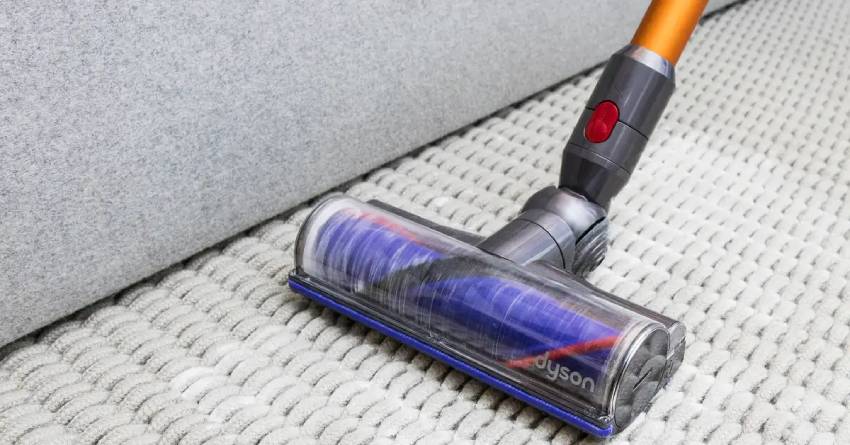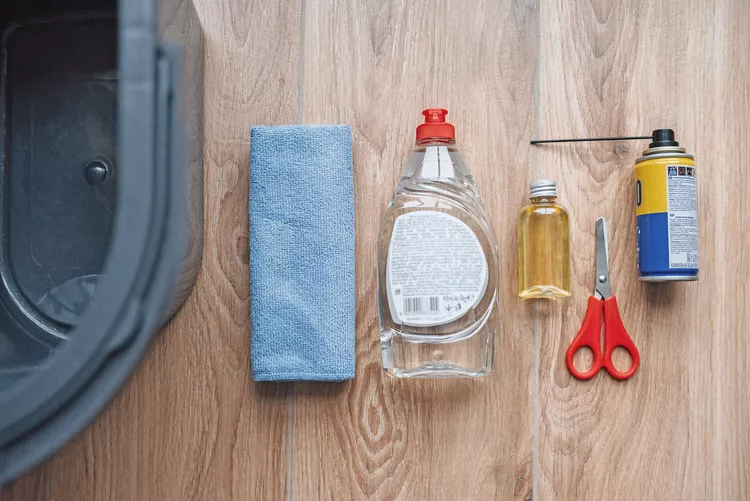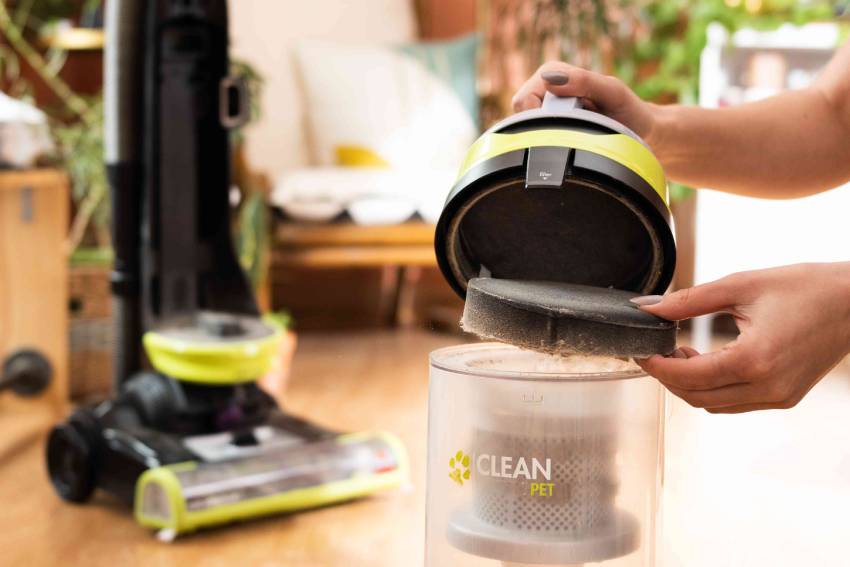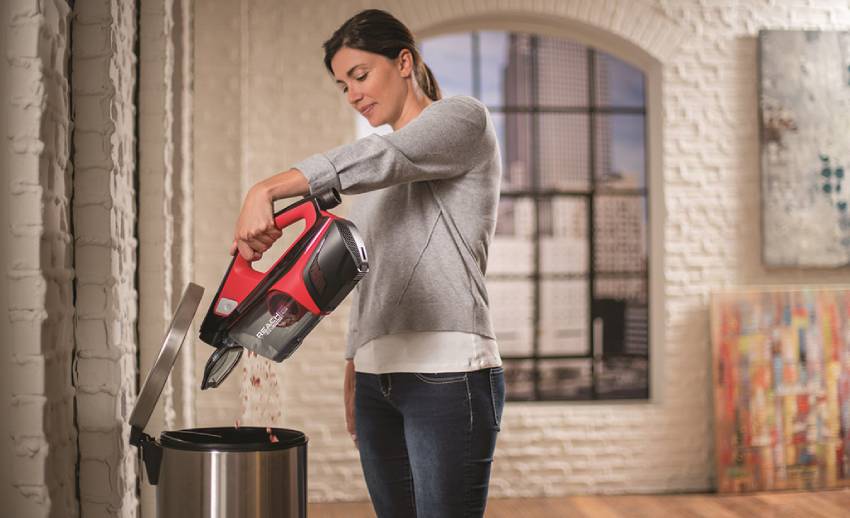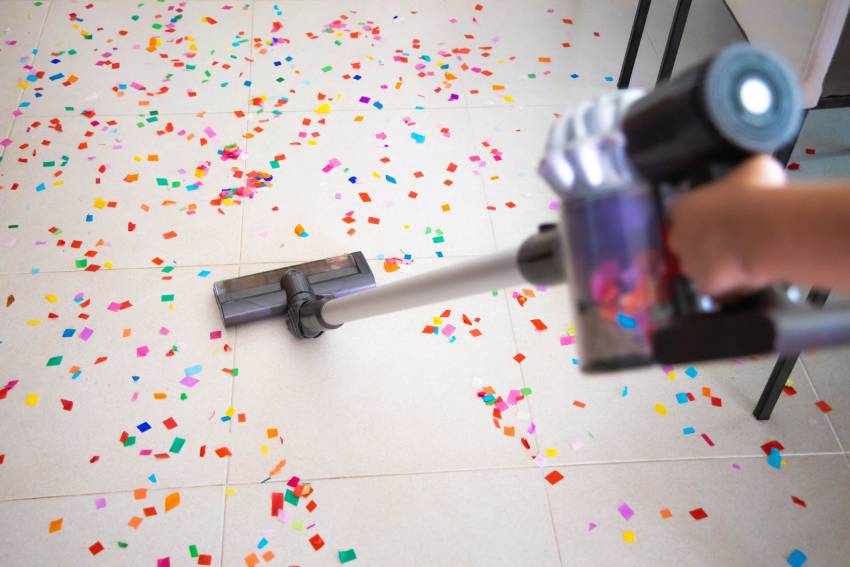The vacuum cleaner itself is the last thing most people think about when it comes to what they should clean within a household. But have you ever noticed that the dust just doesn’t pick up quite the same after a year or two? The power seems to be half what it was; ultimately, the thing just breaks down. There is nothing more frustrating because vacuums aren’t cheap. And sometimes the answer is not always to invest more in the vacuum itself.
Taking care of your vacuum is actually the name of the game. But not everyone truly knows how to clean a vacuum cleaner properly. This is why we can show you how to take care of it.
How To Clean A Vacuum?
Cleaning your vacuum doesn’t have to be the same process each time. You can do regular maintenance to ensure it keeps functioning and then do a deep clean every once in a while to get into the nitty gritty spots that may have some build-up. Knowing what products you can and can’t use to spare yourself from ruining the vacuum is one of the first things one should know. Not all vacuums are the same either, so they will be cleaned differently.
Types of Vacuums
Let’s take a quick look at the types of vacuums you may have so that you can identify the right process for you.
These are some of the most popular choices for houses. They have a bag or cup where the dirt and debris go. It has the ability to do carpet cleaning and has a hose with different attachments. It’s an all-around go-to because it is self-contained and easy to maneuver.
Canister vacuums are also a popular choice for houses, but instead of being self-contained, they are two-part with a canister that drags behind on wheels. The canister has a dirt bag inside that can be emptied when full.
These are tiny little vacuums that can help clean small spaces like cars. They may be wireless or plugin with a cord. They are for hard-to-reach areas and are less common for household cleaning.
They are cordless like a handheld but slightly bigger and look more like an upright vacuum. They are designed for light cleaning since they don’t have a large capacity with their dirt cup.
Typically, these are square or circular small disc vacuums that move around your home without any help. Their capacity is also pretty small since they are small vacuums.
A popular modern option are central vacuums that connect to the house’s structure, so you don’t have to worry about taking the dirtbag out. However, it is still a new concept and not too common yet.
What Can I Use to Clean My Vacuum Cleaner?
While you can take a paper napkin and do a simple wipe down, it’s good to know what products you can and can’t use to clean the product. Not all store-bought cleaners are good for cleaning a vacuum because harsh ingredients may deteriorate the product.
General List of Products To Use:
- Toothbrush
- Scissors or a blade
- Damp cloth
- Another small vacuum or source of compressed air
- Flashlight
Toothbrushes allow you to get into small spaces and brush off the dust that is in the vacuum. Under the vacuum, you will find a brush that spins, especially for carpet cleaners. A blade of scissors can help get tangled hair out of this vacuum part.
In general, you want to use a damp cloth that doesn’t shed, such as a microfiber one. Some people like to use paper towels in a pinch, but the risk is that they can deteriorate or fall apart. Getting small pieces jammed up defeats the cleaning purpose.
You may not have another vacuum to get the dust-up, but this is where a handheld can become handy. One option is you can always swipe any debris into a trash can with a pan and sweeper.
How Do You Deep Clean a Vacuum?
For perspective, you should deep clean your vacuum every 12-18 months. Most people never do it at all. It seems counter-intuitive, but when you take care of your vacuum like this, then you can expect its lifespan to be longer. So how do we do it?
Steps to Cleaning Your Vacuum:
This section is dedicated to cleaning classic upright or canister vacuums that are used in households.
- The first step is to empty the contents of the vacuum like you would normally. Whether it is a canister dirtbag, a dirt cup, or a container doesn’t matter. Not everyone knows how to clean a vacuum bag, even though it’s an important step. Empty all the contents into a trash bag and wipe the inside clean with a damp microfiber cloth and mild dish soap. Set it aside before reattaching.
The Consequence: When you allow for the container or dirt bag to overflow, you restrict the air that needs to flow through the machine. This can end up breaking the vacuum.
- Since all vacuums are different, the guidelines for taking care of your filters may differ. Some of them will recommend replacing the filters every few uses because they are disposable. Other vacuums will allow you to wash and wipe them down. Regarding how to clean your filter, read the manual that came with the product.
The Consequence: When you don’t take care of your filters, the vacuum starts to lose suction. This is when you’ll notice it doesn’t have the same strength in picking things up as it used to. It can take some time for this to occur as it happens gradually.
- Clogs are a vacuum’s worst nightmare. And it is not easy to check for them. The best way to do this is to disconnect any transfer points and search in the entry points. This includes the hoses and the attachments that you get with the vacuum. This is the best approach on how to clean a vacuum hose.
The Consequence: Clogs usually result in vacuuming up oversized items that should be picked up rather than vacuumed. The easiest place for them to get stuck is inside the hose, which can lead to some serious damage.
- Tackling the brush roll may be one of the more unpleasant parts. This is where the scissors come in before you snip any tangles of air you want to be aware of snipping off the bristles. Sometimes a blade is better in this case. This is the best approach on how to clean a vacuum head or brush roll.
The Consequence: The more tangles the brush roll becomes, the more likely you will break it entirely. When the hair gets tangled but continues to try to force the rotation, it can break the motor. The longer you let it build up, the worse it is to untangle.
These steps are the best approach to properly cleaning your vacuum. Once a year, take the time to follow this path for proper maintenance.
FAQ
Can you wash the inside of a vacuum?
The areas where you can use a damp cloth when cleaning the vacuum are the outside and the inside of the canister or removable dirt cub. The microfiber cloth should be damp, not wet. Getting the inside of a vacuum wet can damage the vacuum. Using mild dish soap and warm water is recommended. Hot water can end up melting the parts.
How do you clean a smelly vacuum cleaner?
No one loves the idea of using a vacuum to clean when it has an off-putting smell. That’s why you can use a nicely scented wash when you clean the canister. It’s best not to use store-bought cleaning chemicals so it doesn’t tarnish the product.
How to clean a handheld vacuum
Handheld vacuums need just as much tenderness, love, and care as bigger vacuums. Luckily for you, the process doesn’t take quite as long since it is so small. Most handhelds also can’t be opened up entirely so you will follow a shorter version of the instructions above.
How To:
- Remove the tiny dust container inside the handheld. Empty the dush and use a damp cloth and mild soap to clean the inside.
- Allow it to air dry completely and replace it! That’s it!
Proper Care
Proper care for your vacuum can go a long way. Sometimes vacuums can even last multiple decades when you treat them with some love. Just because the vacuum cleans for you doesn’t mean it doesn’t need to be cleaned. One of the most common mistakes someone can make is not emptying the bag or container more often.
That’s the minimum. Then, looking at your vacuum filters is very important and often ignored. Some vacuums just need a good wipe down, while others may need a full replacement. Then, of course, detangling the brush roll. We’ve all had the awful gurgling sound when it gets stuck. Get ahead of the game and prevent it!
